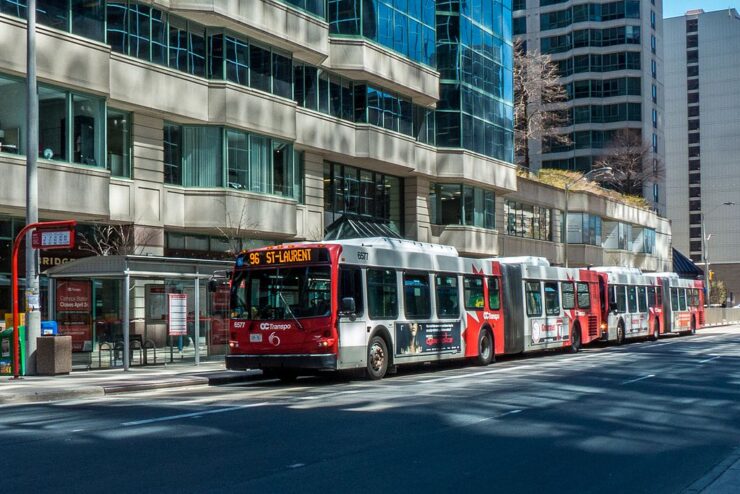On the go
The University of Ottawa has been ranked fourth in North America in the Sustainable Transportation category by the Association of Advancement of Sustainability in Higher Education’s (AASHE) Sustainable Campus Index. The U of O was beaten out for a top-three spot by (1) Toronto Metropolitan University, (2) Dawson College and, (3) Arizona State University.
Sustainable transportation was rated based on three categories: campus fleet — the number of vehicles used by the university and how they are powered; commute modal split — the percentage of students that use sustainable commuting options over alternatives; and support for sustainable transportation — various services accessible to students and staff that support the reduction and or elimination of harmful vehicle emissions.
“Every three years we submit our data to go into STARS (the Sustainability Tracking, Assessment & Rating System, a program part of AASHE), ” said Jonathan Rausseo, the senior specialist for sustainability at the U of O.
Preparing the documents for submission to STARS is an intricate process, with many factors, that requires the coordination and effort of a large team. Daniel Spence, the sustainable transportation specialist in the parking department at the U of O, broke it down:
“We run what’s called a modal share survey, [where] we basically examine the modes of transportation used by members of the university population… find out how many people drive by themselves, how many people carpool, bike, take transit, all the different ways of getting to and from the university and we compile that data… we also do Annual Facility counts…[,] getting a sense of how [and] what percentage of our parking spaces are being used, what times of the day and things like that, so we can track trends and that kind of thing. And then, when done… we send it over.”
The documents issued by the sustainability team to the STARS reflect many of the lesser-known details about the university’s sustainable transportation effort.
For one, the university has a variety of resources that students can access. This includes an intercity carpool service. The service is free to anyone that has a university email address.
“We actually have a website that is designed to facilitate people finding other carpool members… we’ve had it for 12 or 13 years already,” Spence noted.
Second, there have been many less obvious changes to the U of O campus that greatly affect sustainable welfare. In comparison to when Tabaret Lawn was a parking lot, the sustainable welfare efforts become more explicit.
“We don’t have the ability to pay for really expensive capital projects related to parking,” Rausseo explained. “And so, we’ve been lobbying the city for years and years to improve public transportation, help support projects where we can like the footbridge across the canal, the Corktown bridge, and trying to make sure that we have bike lanes that come through the campus and pushing to get the training station on campus, or multiple stations.”
The university is working towards Vision Zero. Rausseo explained: “where people basically try to eliminate all traffic accidents, and collisions within a certain space. And to do what we’ve been doing things like cutting off traffic coming into the core of the campus, making a lot more pedestrian spaces, putting dedicated bike lanes and everything, making the space that much safer.”
With the recent disruptions to public transit, both Spence and Rausseo agreed it is too soon to say whether the state of the university’s sustainable transportation has been greatly affected.
“It’s too soon to say, we’re in the process of getting ready for another survey to gauge that,” Spence added.
The team behind the university’s sustainable transportation programs have a lot of goals for the future.
“[Sustainable transportation is] vital. It’s something that absolutely needs to continue and grow.” Spence explained. “The university will continue to expand its facilities and campuses…[and] we need to make sure we have a space available for people who need it”.





